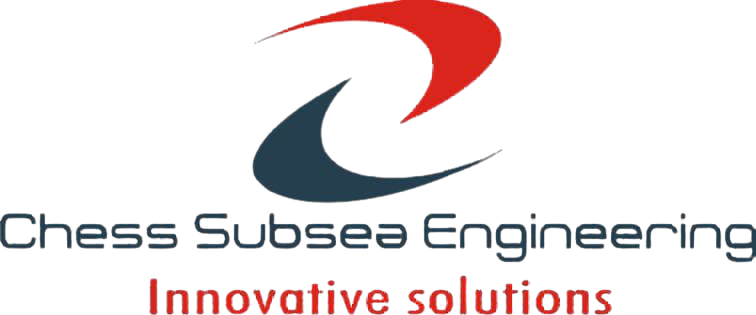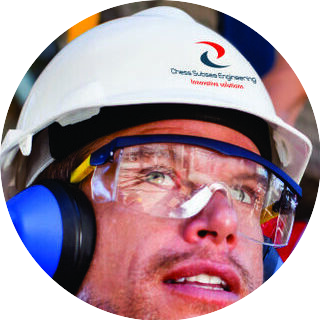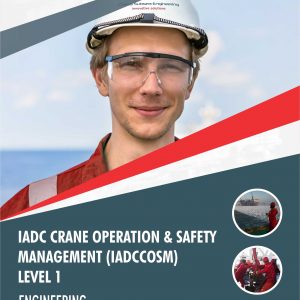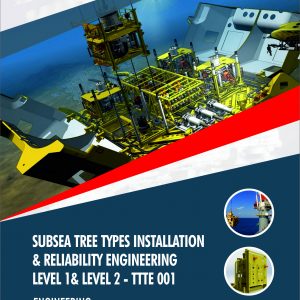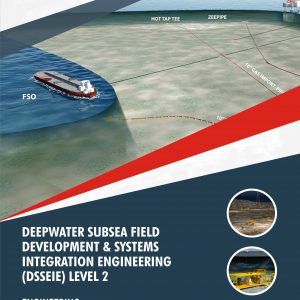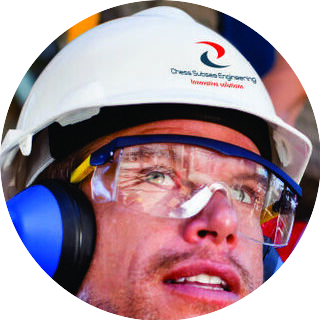Description
The SSIA Level 1 course is designed to provide participants with a foundational understanding of the engineering principles and analysis methods used in the installation of subsea structures. It covers topics such as subsea installation techniques, structural design considerations, and load analysis specific to subsea environments.
The SSIA Level 2 course builds upon the knowledge gained in Level 1 and focuses on advanced analysis techniques and considerations for subsea structures installation. It delves deeper into topics such as dynamic analysis, riser installation, pipeline installation, and installation vessel selection, providing participants with a comprehensive understanding of the complex processes involved in subsea structure installation.
Both the Level 1 and Level 2 courses emphasize practical applications and real-world scenarios. Participants will gain hands-on experience through case studies and simulations, allowing them to apply the learned principles to solve installation engineering challenges faced in subsea projects.
The courses also cover relevant industry standards and guidelines specific to subsea structure installation. Participants will become familiar with codes and regulations governing subsea operations, ensuring compliance and safety in the installation process.
Upon completion of the SSIA Level 1 and Level 2 courses, participants will possess the necessary knowledge and skills to analyze, design, and manage the installation of subsea structures. They will be capable of performing installation feasibility studies, evaluating risks and uncertainties, and making informed decisions to ensure successful and efficient subsea structure installations.
Subsea Structures Installation Analysis (SSIA) Level 1 to Level 2 explores all the major aspects of processes, technologies and systems involved in subsea oil and gas production, examining the building blocks of subsea engineering, including the key components, Field Development, Wellheads, Xmas Trees and Manifolds, Pipelines, Flowlines and Risers, Subsea Control Systems, Umbilicals and Equipments, Reliability, Maintenance and New Technologies along with real time case studies. Subsea structure Design and verification Philosophy using Manifold as a Case Study is also presented along with Subsea Structures Installation Calculations.
Vessel Selection with regards to entire deepwater field development along with pre-commissioning, commissioning, hook ups & decommissioning of FPSO’s & Offshore Structures is also discussed.
Course Outline
Subsea Production Systems
Subsea Field Architecture
Subsea Distribution Systems
Offshore & Subsea Surveys
Subsea Structures Installation and Vessels
Subsea Cost Estimation
Subsea Control Systems
Subsea Power Supply
Subsea Project Execution and Interfaces
Subsea Manifold Systems, Major Divisions & Sub Components
Subsea Manifold Types i.e. Production, Test, Gas Injection or Gas Lift
Subsea Structures and Manifold Terms based on ISO 13628-15
Subsea Manifold and Template Functional Consideration Based on ISO 13628-15
Subsea Manifold System Design Consideration Based on ISO 13628-15
Subsea Manifold Loads Design Consideration Based on ISO 13628-15
Subsea Manifold Piping Design Consideration Based on ISO 13628-15
Subsea Manifold Structural Design Consideration Based on ISO 13628-15
Subsea Manifold Foundation Design Consideration Based on ISO 13628-15
Subsea Manifold Design Verification and Validation
Global Subsea Installation, Design and Installation Projects
What are Subsea Structures?
What does Subsea Installation Engineer Do?
What types of Subsea Structures Do We Install?
Phases of Subsea Structures Installation
Subsea Structures Installation Vessels & Verifications
Case Study: Lift Rigging Design Exercises
Vessels used for Subsea Field Development
Vessel Deck Equipments Requirements and Design
Handling Systems
Deck Spooling
Carousels
Total Commissioning Activity
Project Commissioning Schedule
Process for Handling of Commissioning Queries
Mechanical Completion Structural, Mechanical, Piping, Electrical & Hand Over
Pre-Commissioning (PC)
Commissioning
Typical Commissioning Preparation Activities
Commissioning Documents and Handover to Operations
FPSO Turrent Commissioning & Challenges
Drilling Rig Commissioning
Subsea Structures Commissioning – Xmas Tree,
Manifolds, PLEM, PLET, Jumpers, Spools etc
Decommissioning Requirements and Activities – Platform
Removal, Subsea Structures and FPSO
Technical Support References
Ref 1: Offshore Installation & Vessel Selection
Ref 2: Transportation Barges and Tug Boats
Ref 3: Drilling Vessels
Ref 4: Pipe-Laying Vessels
Ref 5: Umbilical-Laying Vessels
Ref 6: Heavy Lift Vessels
Ref 7: Offshore Support Vessels
Ref 8: Offshore Vessel Requirements
Ref 9: Offshore Vessel Installation Positioning
Ref 10: Subsea Structure Installation Analysis
Ref 11: Pipeline/Riser Installation Analysis
Ref 12: Umbilicals Installation Analysis
Ref 13: Subsea Structures Installation and Vessels Selection JSA
Ref 14: Vessel Mobilization Procedures & Steps with JSA
Ref 15: Vessel Demobilization Procedures & Steps with JSA
Ref 16: A Case Study of Vessel Mobilization & Demobilization
Assessment
Participant underpinning knowledge of Subsea Structures Installation Analysis at Level 1 & Level 2 shall be accessed with short answer multiple-choice questionnaire and case studies at the conclusion of the course.
Professional Certificate
Issued directly by Chess Subsea Engineering Europe.
Participant may be presented for Offshore Petroleum Training Organization (OPITO) Certification.
How to Register
Click here to download registeration booklet on msword and email completed booklet to info@chesssubseaengineering.org directly.
